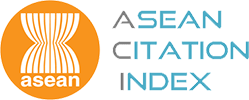Book Review European States and Their Muslim Citizens: The Impact Of Institutions on Perceptions and Boundaries
Abstract
goes viral after the September 11 tragedy, this book adds another scholarly work on how Muslims fared in the twentieth century Europe. The buzz word indicating anti-Islam rhetoric has become contagious particularly after the Runnymede Trust Report (1997) which resulted in many Muslims fearing for their lives. Post September 11 popularises such rhetoric. For various reasons, religion and race have indeed been the targets in this challenging civilised world. The book is timely given the current scenario where one will encounter readings which tend to portray a rather bias perspective on Muslims; Muslims as the group to be avoided, or the group with extreme religious fundamentalism. The stigmatised Muslim—to borrow Goffman’s term—has become a narrative of today’s world, in particular, the social media where the public is frequently exposed to such (negative) debates about Muslims and on being Muslims. As the editors rightly point out, “[a]cross Western Europe, public discourse has been suffused by claims about Muslims and Islam. These claims are negative†(p. 1).
Comprising eleven chapters, this book is a result of thorough research on how Muslims and non-Muslims in the European states embrace their daily lives in various institutions including schools, courts, hospitals, the military, electoral politics, and the labour market. Through a blend of practical schemas of others, the narrative unfolds stories of diverse people in their chosen realms. Readers are also exposed to comparative views of civic education courses in France and Germany. Multiculturalism in Europe and elsewhere is indeed challenging. The book content speaks volumes. The (in)tolerance of religious beliefs and practices might escalate into endless debates which either favour the state or the believers; for instance, in the case of wearing headscarves among female Muslims. The editors acknowledge this in the very first line of the preface that the book “...responds to the often loud debates about the place of Muslims in Western Europe†(p. i), and in the second paragraph on the 2004 ban wearing the veil in public schools in France. In so doing, the chapters skillfully embrace the discourse of practical schemas of those who are labelled as Muslims in a fast-changing Europe.
The four book editors come from diverse backgrounds; for sure, two of the editors specialise in Islam and have done rather extensive research on Muslims. Bowen is Dunbar-Van Cleve Professor in Arts and Sciences at Washington University in St. Louis where he studies Islam and society in Indonesia and Europe. Bertossi is director of the Centre for Migration and Citizenship at the French Institute for International Relations in Paris. Of the other two editors, Duyvendak focuses on urban sociology and nativism, whilst Krook is Associate Professor of Political Science. She studies electoral gender quotas in cross-national perspective. Through their collaborative effort,and insights based on fieldwork and policy analysis, the discourse on perceptions and boundaries by the actors, Muslims and non-Muslims alike, are unfolded. The book is divided into two parts, with the first part exposing readers to the practical schemas in everyday institutional life. The second part discusses institutions and national political ideologies. In the first part, contributors presents practical schemas of people in various institutions including hospitals in France and Germany, as sites of cultural confrontation and integration that is illustrated in Chapter Two. The following chapter discusses how schools in France, the United Kingdom, the Netherlands, and Germany fared and blended in with the Muslims, and poses the readers with a challenging question, “how the school should reflect society†(p. 59). Meanwhile, the Military in France is explored in Chapter Four; the title is rather throught-provoking given that it is framed as a question: French “Muslim†Soldiers? The military, being the military as argued by the contributor (Bertossi himself), “de-emphasizes any ethno-cultural, racial, or religious identities of civilians†when they become soldiers (p. 73). French schools, hospitals, and the relevant practical schemas are revisited in Chapter Five. In the second part, the courtroom scenario leads us to the juridical framings of Muslims and Islam in France and Germany (Chapter 6). Embedded elements include how judges enact their daily roles in decision making through the acts of marriage and adaptation to religious freedom. Chapter Seven exposes readers to the comparative analysis of the civic education course content in France and Germany whilst Chapter Eight examines minorities in electoral politics in Sweden, France and Britain. Chapter Nine deals with the Scandinavian headscarf debates in public and private institutions in Denmark, Norway and Sweden. The exclusion of Muslims in the Netherlands is explored in Chapter Ten. It is interesting to observe how the contributors guide us to the discourse of “neoculturalismâ€, which they argue, is “to identify a form of cultural protectionism, representing the world as divided into different, inimical cultures, and to distinguish this way of thinking from forms of cultural relativism†(p. 235). Here, we are exposed to the complicated scenario of “multiculturalism†in the country as I posited earlier. The binary perspective adopted by the Netherlands, between the “Dutch values†and the “Islamic valuesâ€, can escalate the tension caused by multiculturalism. One might have to further fine-tune the meaning of such a word in the current world where social media can help to propagate both good and bad intentions.
I find this book an eye-opener to the discourse on perceptions and boundaries where Muslims in particular are involved, which are delicate and complicated to understand for any person who is not exposed to, or experience racism, and Islamophobia. Such acts of racism and Islamophobia are embedded in institutions as existing contexts of enactments and national ideologies as claimed by the editors in Chapter One and later reinforced in Chapter Five. They posit that in such non-homogeneous institutions, “actors develop practical schemas about Muslims and Islamâ€. The practical schemas, in turn, are constantly being reshaped and re-weighted by the events. In this sense, how we should embrace diversity in the name of multiculturalism, voiced often by many countries, for example, Malaysia, Singapore, and Britain; in particular, the United States, need further deliberation. It seems to me that in the deliberation, both parties, the authority and the people affected (Muslims), must partake in easing the tension and constraints. As the editors clearly articulate in the concluding chapter, institutions differ by token, by functions and by the contexts they are in. Obviously, there is no easy answer to comprehend the complex situations faced by the countries cited in the book; this is clearly made known by Bowen and associates. They have argued that “it is through the public institutions that citizens experience the state†(p. 266). Sensitivities weave in among the people (citizens) they spoke with, between duties to the states and to religion. This, in turn, brings us to the question of nation-building which seems to be an endless debate. In this regard, Mustafa Ishak’s book entitled, The Politics of Bangsa Malaysia: Nation-Building in a Multiethnic Society (2014) is worth reading for those who want to know more about Malaysian politics given the multicultural setting and Islam as the official religion. How do we tolerate diversity in the name of multiculturalism with people confessing different religious beliefs and ways of practising such beliefs while at the same time conform to the national ideologies and idea of being complete citizens? I find that in this context, the editors have managed to highlight the so-called tensions or tug-of-war between such competing needs. Arguably, it is fairly evident in the title with the use of “European States†and the possessive pronoun “their Muslim Citizensâ€, as it also suggests a sense of belonging for both sides though the book title is a bit wordy. The book contributors are rather courageous to discuss the issues given the depth of understanding and sensitivity required of the subject matter. Perhaps, more is needed in deliberating the idea which calls for a concerted effort from all parties involved. To be sure, those discussing the Muslims must have sufficient knowledge about Islam and its practices.









